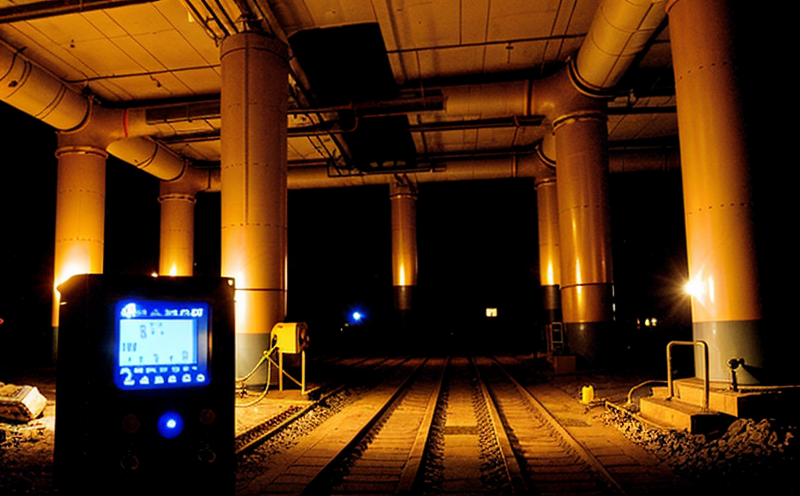ASTM D2459 Uranium Content in Mining Samples Testing
The ASTM D2459 standard is a crucial tool for quality managers, compliance officers, and R&D engineers working in the mining sector. This method specifically addresses uranium content determination in mineral samples using neutron activation analysis (NAA). Uranium, being one of the key elements in the nuclear fuel cycle, is often found in various mining operations including coal, phosphate rock, and uranium ore extraction.
Neutron activation analysis allows for non-destructive elemental analysis. In this process, a sample is exposed to neutrons which causes specific isotopes within the sample to become radioactive. The radioactivity emitted by these isotopes can then be measured to determine their concentration in the original sample. For uranium content determination specifically, ASTM D2459 specifies the use of thermal and epithermal neutron beams.
The procedure outlined in ASTM D2459 is meticulously designed for precision and reliability. It involves several key steps from sample preparation through to final analysis. Sample preparation includes grinding mineral samples into a fine powder, homogenizing it thoroughly, and then creating aliquots suitable for the NAA process. The accuracy of these initial stages significantly impacts the overall results.
The instrumentation used typically consists of specialized gamma ray spectrometers capable of detecting low-level emissions from uranium isotopes. These instruments are calibrated according to international standards such as ISO 5725-1:2012, ensuring consistent and accurate measurements across different laboratories worldwide. The acceptance criteria specified by ASTM D2459 ensure that only samples meeting stringent quality benchmarks are accepted for testing.
Understanding the implications of uranium content in mining operations is essential not just from a safety perspective but also due to regulatory requirements imposed globally. For instance, the European Union's Radioactive Contaminants Directive sets limits on permissible levels of natural radioactivity in construction materials, which includes certain types of mine waste products.
Compliance with ASTM D2459 is not only about meeting statutory obligations but also contributes to safer working environments by providing reliable data on potential hazards associated with uranium exposure. This information can inform decisions regarding ventilation systems and personal protective equipment necessary for miners handling radioactive materials.
Industry Applications
The ASTM D2459 standard finds extensive application across various aspects of the mining industry, particularly where uranium content needs to be accurately quantified. This includes but is not limited to:
- Exploration and Resource Assessment: Early-stage evaluation of potential uranium deposits.
- Environmental Monitoring: Continuous assessment of environmental impact following extraction activities.
- Risk Management: Identification and mitigation strategies related to occupational health risks.
In each of these contexts, accurate determination of uranium content helps stakeholders make informed decisions that balance economic interests with public safety concerns. By adhering to ASTM D2459 standards, mining companies demonstrate their commitment to sustainable practices and regulatory compliance.
Quality and Reliability Assurance
Ensuring high-quality outcomes in ASTM D2459 testing requires robust quality assurance measures. These begin with meticulous sample preparation, ensuring homogeneity throughout the aliquots used for analysis. Calibration of instruments according to ISO 5725-1:2012 is paramount to achieving precise results.
Regular inter-laboratory comparisons serve as another critical aspect of maintaining reliability. Participating in such exercises allows laboratories to benchmark their performance against peers and identify areas for improvement. Internal audits conducted periodically help maintain adherence to procedural guidelines set forth by ASTM D2459, thereby enhancing confidence in the integrity of test results.
Additionally, continuous training for personnel involved in testing ensures they stay updated with advancements in NAA techniques and best practices recommended by relevant international standards like IEC 60531:2008. Such measures collectively contribute to delivering consistent, accurate, and reliable uranium content determinations under ASTM D2459.
Frequently Asked Questions
Use Cases and Application Examples
ASTM D2459 has diverse applications within mining environments:
- Coal Mining: Detecting uranium in coal ash residues for environmental impact assessments.
- Phosphate Rock Mining: Evaluating the natural radioactivity levels to ensure compliance with international regulations.
- Uranium Ore Extraction: Initial exploration stages where accurate uranium content is crucial for resource assessment.
In each case, ASTM D2459 plays a pivotal role in providing reliable data that supports decision-making processes across the mining industry. This ensures both compliance with legal requirements and safeguarding public health and safety.





